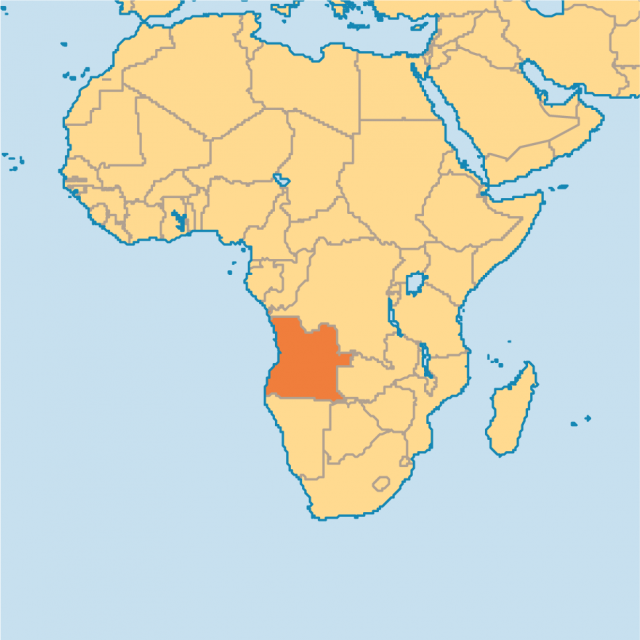Angola
Area 481,351 square mi (1,246,700 square km)
Population 22.14 million 2014
Capital Luanda
Highest Point 8,594 ft (2,620 m)
Lowest Point 0 m
GDP $131.4 billion 2014
Primary Natural Resources petroleum, diamonds, natural gas.
A COUNTRY LOCATED along the southwest coast of Africa, the republic of Angola is a vast territory divided into 18 provinces, one of which, Cabinda is an exclave within neighboring CONGO. The Berlin Conference of 1885–86 determined the current borders with the Republic of the Congo, Democratic Republic of the CONGO, ZAMBIA, and NAMIBIA. Portuguese is the official language, but Umbundo and several other African languages are also spoken in rural areas. Angola has a semi-presidentialist system, with the president being both chief of state and head of government.

From a coastal plain, the land rises in stages toward the high interior plateaus, covered mainly with grasslands and bushes. There are tropical forests in the north, and a rocky desert occupies the southwest corner. Angola's climate is tropical, humid in the north with a cool dry season (May to September) and a warm rainy season (October to April), and becomes semiarid in the south.
HUMAN GEOGRAPHY
Humans have lived in the area that is now Angola since prehistoric times, with Bantu-speaking peoples settling there about 2,000 years ago. The Portuguese arrived in the 1480s and built fortresses and outposts along the coast. In the following three centuries, Angola became a primary source of slaves for the Americas, especially for BRAZIL. In the 20th century, thousands of Portuguese moved to Angola, seeking a better life in a land of great natural resources and potential. In 1975, Angola gained independence from Portugal. War has been the norm in the last 40 years, costing more than 1.5 million lives, leaving the economy in disarray, and causing destruction of basic infrastructures and widespread presence of post-battle land mines.
Ethnicity plays an important role in the country, with most of the population of Bantu origin. Other groups include the Ovimbundu, the Mbundu, and the Kongo. The capital and largest city is Luanda (3 million people), and main cities include Cabinda, Benguela, Lobito, and Lubango. The majority of the young population lives in rural areas and depends on subsistence agriculture. Life expectancy is low in this African country.
Angola has enormous natural resources, among them petroleum off the northwest coast, and diamonds in the northeast. Oil contributes with almost half the GDP and more than half of exports. Main economic activities are mining, logging, and farming. Agricultural production includes bananas, cassava, coffee, sugarcane, sisal, corn, cotton, and manioc, but much of the food is imported. The rich fisheries nurtured by the Benguela current along the 994-mi (1,600-km) coast are still underexploited. The country also has significant hydroelectric potential, since the central highlands are the source of many important rivers, such as the Cuanza, Cunene, and Cubango.